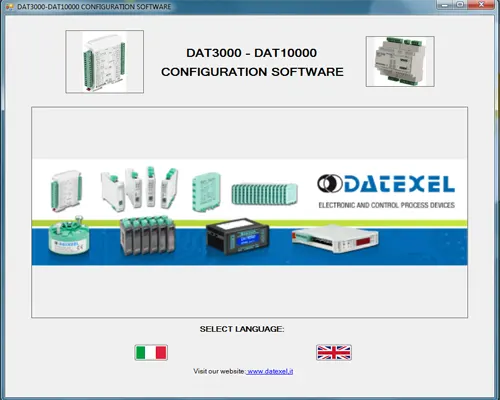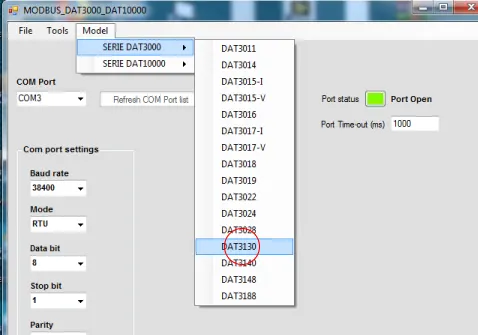Modbus Relay Output and Digital Input Module
DAT3130



The DAT3130 Modbus Relay Output Module provides 4 relay outputs and 4 digital inputs, monitored and controlled via Modbus RTU communication. It is designed for industrial automation tasks where both relay control and digital input monitoring are required on a Modbus network.
Of the four relay outputs, two are SPDT (Single Pole Double Throw) contacts, while the other two are SPST (Single Pole Single Throw) normally open relays. This combination makes the DAT3130 suitable for a variety of control applications, including switching, alarms, and contactor driving.
The I/O section is fully isolated from both the Modbus communication line and the power supply, ensuring safe and reliable operation in industrial environments.
| INPUT | OUTPUT | POWER SUPPLY |
|---|---|---|
| Modbus RTU | 4 Relays | Power Supply Voltage 18-30Vdc |
| 4 Digital Inputs | Reverse polarity protection 60Vdc | |
| CURRENT CONSUMPTION | CONFIGURATION | ISOLATION |
| 120 mA Max. | PC Programmable | Between Input/Comms/Power Supply 1500Vac. |
| EMC | HOUSING | TEMPERATURE |
| For Industrial environments | Material self-extinguishing | Operating Temperature 14°F +140°F -10°C +60°C |
| Immunity EN 61000-6-2 | Dimensions W x H x T 4" x 4 3/4" x 3/4" | Storage Temperature -40°F +185°F-40°C +85°C |
| Emission EN 6100-6-4 | 100 x 120x x 22.5 mm | Humidity (non condensing) 0-90% |
| Weight 3 oz 900 g |
| Output: | |
| 2 SPDT Relays | 2 Amp 250 VAC, 2 Amp 30Vdc. |
| 2 SPST Relays | 2 Amp 250 VAC, 2 Amp 30Vdc. |
| Modbus | RS485 |
| input: | |
| Digital Input | Off State 0-3 V, On State 10-30V. |
| Communication: | RS485 Modbus. |
| Power Supply: | 18 - 30 Vdc. Reverse polarity protection 60 Vdc. |
| Current Consumption: | 30 mA. |
| Temperature rating: | Operative Temperature -4°F +140°F -20°C +60°C Storage Temperature -40°F +185°F -40°C +85°C. |
| Humidity: | (not condensing) 0-90%. |
| Housing: | Material self-extinguishing. |
| Dimensions: | W x L x H 3 3/4X 3 1/2 X 1 7/8 inch, 90 x 74 x 48mm. |
| Weight: | 7 oz 200 g. |
| EMC. | For industrial environments. |
| Immunity: | EN 61000-6-2. |
| Emission: | EN 61000-6-4. |
| Isolation: | Between Modbus Master, Slave/Power supply 1500Vac, 50Hz, 1 Minute. |
| Configuration: | PC Configurable. |
| Output | |
| Relay Output 0 | Common 1 Normally open 2 Normally closed 3 |
| Relay Output 1 | Common 4 Normally open 5 Normally closed 6 |
| Relay Output 2 | Common 7 Normally open 8 |
| Relay Output 3 | Common 9 Normally open 10 |
| Digital Input 0 | Common 16 Input 12 |
| Digital Input 1 | Common 16 Input 13 |
| Digital Input 2 | Common 16 Input 14 |
| Digital Input 3 | Common 16 Input 15 |
| Power Supply (18-30Vdc). | Positive J Negative I. |
| RS 485 Slave | Positive (D+)B Negative (D-) A GND C |
| Init | Pin D Init Gnd C |






